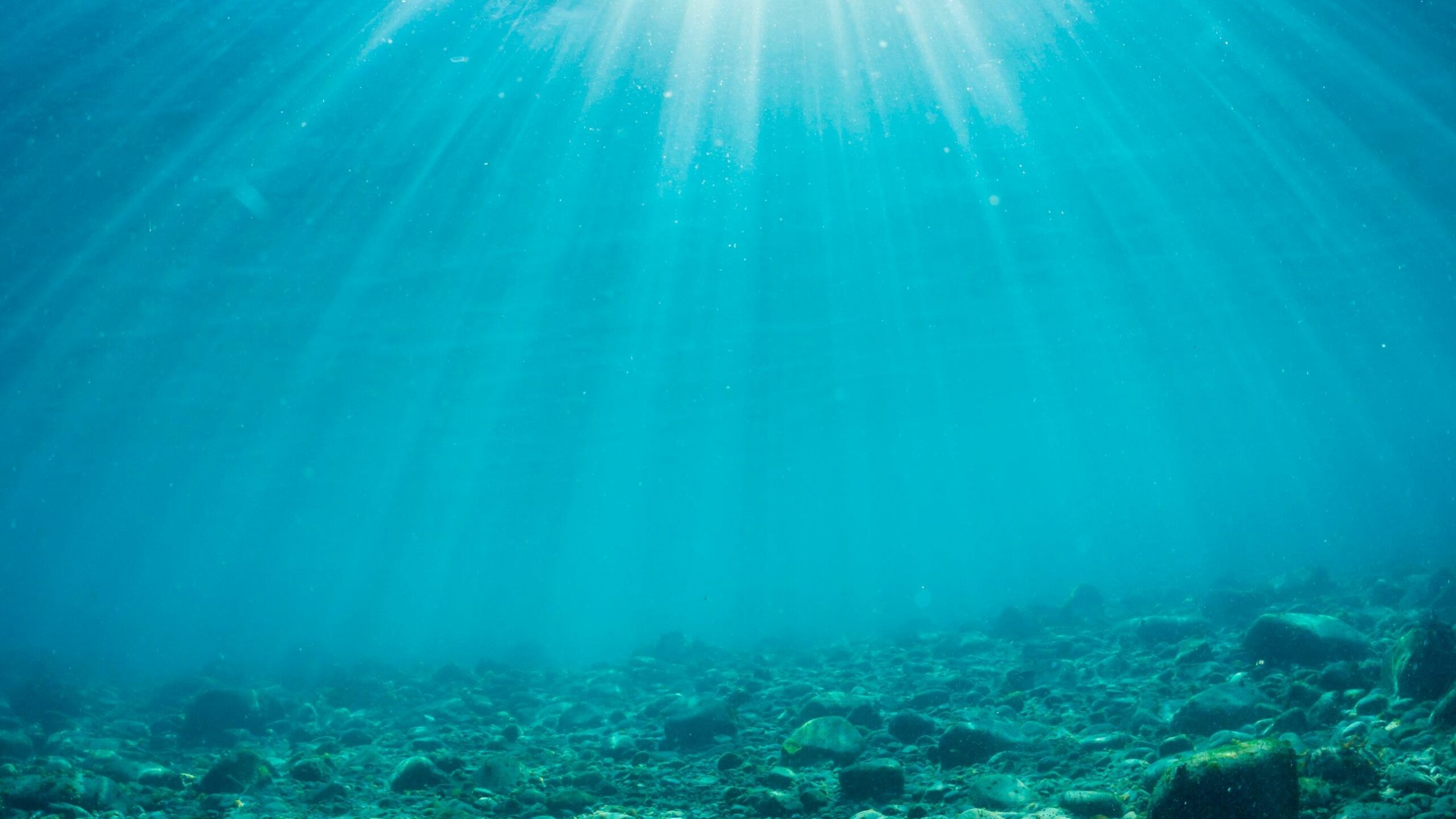Drawing heat from mid-ocean ridges and transporting it to floating platforms to produce electricity, hydrogen or fertiliser in a virtually carbon-free way: that’s the ambitious concept proposed by Viridien, an advanced technology and Earth science company.
The mid-ocean ridges at the bottom of the seas hold immense, as yet unexploited, heat potential.
These ‘magmatically’ active zones, along which the tectonic plates are moving apart as they expand, have a high thermal flux and gradient and shallow access to reservoirs. They represent remarkable geothermal potential.
In a white paper, published earlier this year, Viridien – formerly CGG – has outlined the potential of offshore geothermal energy as a green energy resource of global significance and set out a framework for its responsible development. As part of this, Viridien has been studying for four years the feasibility of harnessing offshore geothermal systems to exploit the heat contained in these ridges. Its thermal models predict that potential will be highest where the systems are isolated from the ocean waters by impermeable geological layers, rather than at active hot vents on the seafloor which are, in effect, allowing heat to escape. The aim is to guarantee a baseload energy supply that is affordable, reliable and sustainable.
Worldwide, mid-oceanic ridges – also known as ‘oceanic spreading centers’ or ‘oceanic rifts’ – cover an area of 65,000 km2. They are present in all the major oceans. But these are not the only underwater zones targeted by offshore geothermal energy. This type of heat source also exists along flooded rifts – where these ridges extend landward – and in certain seas formed in areas where the Earth’s crust is stretching.
A true “blue economy”
Worldwide, mid-ocean ridges – also known as oceanic rifts – cover an area of 65,000 km2. They are present in all major oceans. But these are not the only submarine zones targeted by offshore geothermal energy. This type of heat source also exists along flooded rifts – where these ridges extend landward – and in certain seas formed in areas where the earth’s crust stretches.

Schematic showing offshore geothermal resource exploration and development adjacent to sea floor spreading centers generating baseload power, fresh H2O, green H2 and NH3 with the potential for CO2 storage and controlled ocean fertilization (Image © Viridien).
The heat from the ridges could be used to turn turbines to produce green electricity, but also as a basis for developing a whole production chain.
For example, the significant volume of freshwater produced by the steam condensate could be used for agricultural use in drought areas and the electricity produced could be used to electrolyse this water and produce green hydrogen. This hydrogen, combined with the green electricity, could in turn be used to produce other green fuels or green fertiliser (ammonia).
Some of the offshore geothermal sites may be in mid-ocean “deserts” in terms of plankton productivity because of lack of nutrients. The possibility of using the geothermal brines to supply nutrients that could enable the development of aquaculture sites would therefore be worth investigating, particularly as these sites could act both as a source of food/feedstock and a C02 sink.
In addition, geothermal fluids brought to the surface could in some cases be used as sources of chemicals and minerals (such as copper) and offshore geothermal projects could be associated with underground CO2 storage.
This ‘blue economy’ could have virtuous effects on many sectors. It should have a positive impact on the development of onshore infrastructures for the distribution and marketing of products from offshore geothermal exploitation, as well as supporting the training of engineers and technicians and strengthening the economies of countries located in the vicinity of exploitation zones.
Additionally, offshore geothermal helps mitigate further land use by tapping into ocean-based resources, preserving valuable terrestrial landscapes and ecosystems. As a steady and reliable baseload energy source, it reinforces energy security, even in regions prone to climate extremes and natural hazards. Thanks to rapidly advancing drilling technologies, the potential for future regulatory support and the technology learning curve, associated costs are expected to decline, enhancing the viability of this sustainable energy source.
‘Repurposing’ what the oil industry has learned
Another advantage of offshore geothermal energy described in Viridien’s white paper is that it can draw on technologies, materials and expertise already developed by the oil and gas industry. These include advanced deepwater drilling technology and seismic imaging in complex environments. These would enable precise drilling and optimised management of difficult underground conditions, which are key to the success of offshore geothermal energy projects.
Other elements of the oil industry could also be used. These include components such as wellheads, risers and flowlines, which are resistant to the high pressures and corrosive effects of geothermal fluids. Another area of synergy: floating platforms and fluid pumping and treatment systems, which are also resistant to high pressure and high temperatures. Finally, all the oil exploration techniques (seismic and multiphysics studies, reservoir modelling, the ability to interpret data, particularly seismic data, and to understand geological formations, etc.) will be of great help in locating the subsea zones to be exploited.
An equitable project
The company has published a patent application (see box below) for a combination of specific technologies to explore and develop offshore geothermal resources. The aim of this filing is to ensure that there can be rapid, responsible and equitable development of these resources.
With such a wide range of offshore geothermal resources available and such a multiplicity of potential economic applications, there is a real and urgent need for developed and developing countries to collaborate, by sharing knowledge, technologies and expertise, to guarantee a fair distribution of benefits and better protection of waters at international level.
What is a the Viridien patent application?
The innovation in the Viridien patent lies in its ability to combine the extraction of offshore geothermal energy with:
- A floating platform serving as a base for the wellheads,
- Geothermal energy production,
- Options for green fuel production facilities.
The configuration of the riser connecting the geothermal reservoir to the floating platform – the main feature of this system – allows the pump inside to efficiently draw the geothermal fluid from the reservoir to the surface, where it can be converted into steam and used to generate electricity on the platform itself. In the base of the riser, the geothermal fluid remains in a single-phase state, allowing it to be pumped efficiently and ensuring that it is delivered smoothly to the platform.
A game-changer?
Geothermal energy is set to play a bigger role in the future energy mix, which currently accounts for only 1% of the world’s energy. The opportunity represented by offshore geothermal energy could be a real game-changer. Not to mention the fact that it is completely in line with the sustainable development goals of the United Nations Development Programme (UNDP): clean energy, climate action and partnerships for sustainable development.
Source: Offshore geothermal energy: a globally important green energy resource and its responsible development, Rebecca Bolton, Rob Crossley, Alex Fowler, Ulrich Schwarz-Schampera and Lucy Njue. Viridien, February 2024.
3 questions for Rebecca Bolton, Offshore Geothermal Team Leader at Viridien
What stage has the offshore geothermal project reached since you wrote your white paper in February 2024?
The publication of the offshore geothermal white paper was a pivotal moment for Viridien (then known as CGG before our recent rebrand). It served as a catalyst to position our team for open dialogue with key stakeholders, including policy makers, government officials, engineers, geologists and end users.

It also provided us with the platform we needed to raise awareness of the potential of offshore geothermal energy, particularly in rift zones, and to engage in serious conversations about its future development.
We took advantage of an invitation from the International Seabed Authority (ISA) to a workshop dedicated to offshore mining to present offshore geothermal energy as a viable solution for electricity generation but also as a ‘responsible’ way of extracting minerals from geothermal-produced fluids.
At the same time, we explored different methods of resource exploration and tested our techno-commercial model to ensure its viability. We have also focused on establishing partnerships and forming consortia in high-potential areas to accelerate project development.
Are mid-ocean ridges the only targets of your project or are you interested in other tectonic contexts?
Although oceanic ridges are an attractive option because of their high heat flow and volcanic activity, other tectonic settings can also be considered. Although the geological characteristics of the site determine whether it is suitable for geothermal development, other factors, such as local energy needs or the economic model, also play an important role in whether a project is pursued.
We’ve focused much of our communication on ridge crests – particularly ocean ridges – because with a first-of-its-kind offshore geothermal project like this, it’s important to maximise the chances of success.
That said, other sites, such as subduction zones and transform faults, active volcanic islands and seamounts, can also host viable geothermal systems. These areas can experience significant heat flows, although the geological heterogeneity of these environments means that they can be more complex to explore and develop. However, advances in exploration methods, reservoir modelling and technology could make these environments increasingly attractive in the future.
How do you locate prospects?
To identify and locate offshore geothermal deposits, we plan to use a range of geophysical, geological and geochemical exploration techniques. While the overall strategy is similar to onshore geothermal exploration, offshore environments can benefit from enhanced seismic imaging and Controlled-Source Electromagnetic Methods (CSEM). Although seismic methods can be useful for characterising certain types of land area, their high cost and imaging difficulties often limit their frequent use. By taking advantage of advanced offshore seismic techniques, we aim to reduce resource uncertainty and improve the chances of geological success, which can have a substantial impact on project economics.
Seismic studies are essential for mapping underground structures, such as fault systems and heat sources, which helps us to visualise potential geothermal reservoirs. In addition, the CSEM could play a role in identifying variations in subsurface resistivity, which can signal the presence of geothermal fluids. This method could be particularly useful at sea, where it can differentiate conductive geothermal fluids from the surrounding rock, thereby increasing the chances of successful exploration efforts.
We could also integrate magnetotelluric (MT) surveys, gravity data and temperature gradient measurements to refine our understanding of the subsurface. These techniques, combined with geochemical fluid sampling, could provide essential information on the temperature, fluid composition and overall potential of a geothermal reservoir.
While seismic imaging remains the main focus offshore due to the lack of surface indicators and its proven success rate in imaging key components of the zone, the combination of seismic, CSEM and other methods allows us to obtain a complete picture of potential geothermal zones. This integrated approach allows us to effectively target the most promising areas for further exploration and development.
By Véronique Molénat.


